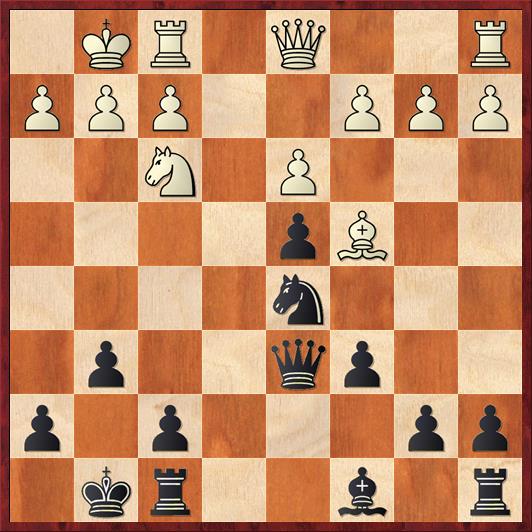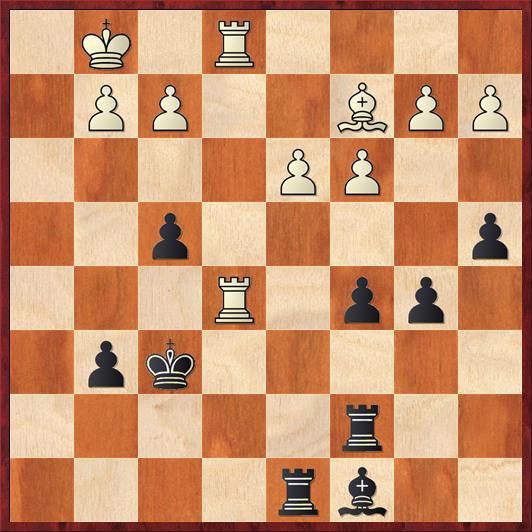This summer I’m going to spend three days a week in Berkeley, which gives me the opportunity for the first time to play in the Tuesday Night Marathon at the Mechanics Institute in San Francisco. I’ve wanted to play in this event for twenty years, but never been able to fit it into my schedule. The main problem is that it would be close to a 2-hour drive from Santa Cruz, and the prospect of finishing an exhausting game at 10:30 pm and then driving two hours to get back home … and doing this every week for eight weeks … was just too daunting. Coming from Berkeley, it’s a whole lot easier: a thirty-minute subway ride (at most) and you’re home.
Arriving at the Mechanics, I saw a lot of familiar faces. Bryon Doyle is running the event as a tournament director for the first time. Cailen Melville, whom I used to play often in Santa Cruz, was there. I chatted with Eric Steger, a class-A player whom I’ve played several times, and Thomas Maser, whom I’ve played only once but in a very memorable game. I’m pretty sure that I have mentioned all of these people in this blog at one time or another.
There were 99 players signed up for this event and I am the #6 seed. Because it’s all one section, I was paired down against a 1600 player, whose name I’ve forgotten. I could look it up on my scoresheet when I get back home later today, but I don’t think he would mind if I just call him NN.
Going into this game I was very worried about what kind of form I would be in. This was my first tournament game in two years. For the last few months I’ve hardly even played any speed chess, and my only opponent has been the computer.
The game ended up being like the Golden State Warriors against the Houston Rockets. (For people who don’t follow the NBA, that was a pro basketball playoff series that just ended; of course I’m a fan of Golden State because, duh, I live in the Golden State of California.) Like the Warriors, I stumbled around for the first two quarters, but then locked into a good game plan and my opponent just melted.
Here’s the stumbling-around part.
Position after 14. Nf3. Black to move.
FEN: r1b2rk1/pp3p1p/2pq2p1/3n4/2Bp4/3P1N2/PPP2PPP/R2Q1RK1 b – – 0 14
I played the Bird Variation of the Ruy Lopez as Black, and my opponent played rather unambitiously as White, allowing me to trade off one of my doubled d-pawns and obtain a nice space advantage. But White does have a solid position with no real weaknesses.
My initial plan was to play 14. … Nf4 here, but I wasn’t really sure what the knight was going to do on this square, other than look vaguely menacing. Then I started looking at White plans, and I realized that I wasn’t too happy with the possibility of his playing Qd2, Qh6, and Ng5. Of course there are many ways I can keep this catastrophe from happening, but I thought, “Why not nip it in the bud?” So I played
14. … Kg7??
Oops! I just completely forgot that my d-pawn was en prise! Looking back on it now, this was exactly the sort of mistake you would expect from someone who hasn’t played in two years.
Of course my opponent played 15. Nxd4, and there I was — a pawn down against a 1600 player, with not a whole lot of compensation.
But there is a silver lining to this dark cloud, and that’s the fact that I’m a pawn down against a 1600 player. I’m not a pawn down against Magnus Carlsen or against Rybka, in which case I might as well just pack up the pieces and go home. Against a 1600 player, if I just don’t panic, I eventually ought to be able to create some sort of counterplay or confusion.
And eventually, that’s kind of what happened. We eventually got to this position.
Position after 37. … Rc7. White to move.
FEN: 2br4/2r5/5kp1/1pp1R3/p4p2/2PP4/PPB2PP1/4R1K1 w – – 0 38
I’m still a pawn down, but I feel as if I have made considerable progress. I had to allow White to take control over the e-file (opposing him would have allowed piece exchanges) but I have neutralized his rooks by taking away all of the penetration squares. Aside from that, my pieces are pretty well posted. I have pressure on his d3 pawn, which cannot easily advance, and White’s bishop is useless at the moment.
White decided to try to give his bishop some air.
38. b3 ab 39. Bxb3?? …
Just like me, my opponent simply forgot that he had a pawn en prise. But I do want to point that even if he had played the correct move, 39. ab, I am still winning a pawn with 39. … Bf5. The best I can see for White is to go into an almost certainly drawn endgame with 40. R5e2 Bxd3 41. Rd2 R7d7 42. R1d1 c4 (all of these moves look forced) 43. bc bc 44. Bxd3 (not forced, but I think White can play this) 44. … cd. If Black instead opts for the rook trades with 44. … Rxd3 45. Rxd3 Rxd3? 46. Rxd3 cd 47. Kf1, it’s White who wins the king-and-pawn endgame: 47. … Ke5 48. Ke1 Kd5 49. Kd2 Kc4 50. g4! winning the tempo battle.
After White’s blunder, his position crumbled very rapidly:
39. … Rxd3 40. Rd5 Rxc3 41. Rd6+ Kg7 42. Be6? (Yikes, anything has to better than this.) 42. … Re8 43. f3 and here 43. … Re3 looks totally killing, but I decided to keep it simple with 43. … Rxe6 44. Rxe6 Bxe6 45. Rxe6 Rc2 46. Rc6 b4 47. Kf1 Rxa2 48. Rxc5 b3 49. Rb5 b2 50. resigns
Not a very great game, to be honest — it was a case of the adage “the second-to-last player to blunder wins.” I would not usually blog about this sort of game, but hey! It’s my first chance in two years to write a post about a tournament game. I’ll try to make the next one more exciting. At least I feel as if I’ve shaken off the rust and I will come to the next game better prepared to do battle. (I’m taking a bye in round two, and my next game will be in two weeks.)




